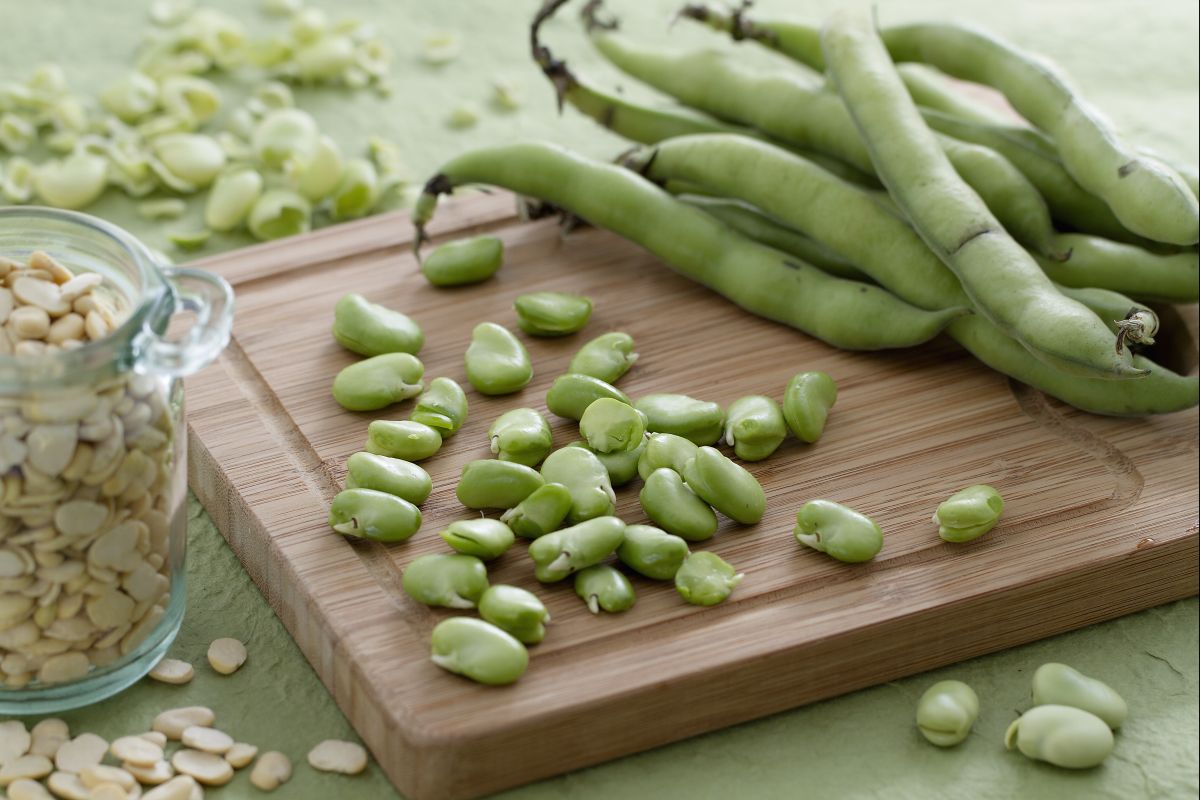Pasta with fava beans, bacon, and cherry tomatoes
- Easy
- 30 min
- Kcal 843

Fava beans, or "fave" as they call them in Italy, are super versatile. You might not know it, but they come in types like Baggiana, Reina Mora, Aguadulce Supersimonia, and Superaguadulce. Really good stuff. They're in season from March to July—prime time for these little guys. When picking fave, find pods that are firm and intact. Avoid ones with soft spots.
Pulire le fave is all about getting them ready to eat. First, you pop the beans out of their pods, or sgranare le fave, and sometimes you remove the tender outer skin. This gives a smooth texture. In lots of Italian homes, especially down south, fave fresche are enjoyed raw. Really, they make a nice snack or get tossed into salads for a crisp, earthy touch.
Across Italy, people do pulizia delle fave in different ways. Some just sgranare le fave and sauté them quickly in a pan. Pretty much, others boil them or turn them into a creamy spread. The heart of come pulire le fave depends on your plan. Leave the skin on if you like them rustic and firm—great for hearty dishes. Take it off for a soft ingredient perfect for soups or purees.
And look, they pair beautifully with dishes like Tuscan soups or Puglian purees. Knowing the right way to clean and store them—like in a paper bag in the fridge—keeps them fresh. Plus, you’ll always have something for those classic ricette con le fave. Whether going for a traditional dish or just adding them to a salad, focusing on pulizia delle fave makes each bite moist and flavorful. I gotta say, this little bit of care really makes all the difference. Transform your meals into something really really good!

In stores, you can also find dry fava beans, in addition to fresh ones. There are two types: dry fava beans with skin or peeled dry fava beans, meaning without the outer skin 1. The difference between the two is the soaking time required before cooking: 16-18 hours for dry fava beans with skin, 8-10 hours for peeled ones. Cleaning fresh fava beans 2 is a very simple but also very lengthy process because the beans must be shelled and cleaned one by one. To shell the fava beans, detach one of the ends of the pod 3.

Split the pod in half 4, spreading the two ends and opening it completely, then extract the seeds by running your thumb along the inside of the pod 5 and collect the seeds in a bowl 6.

Remove the growth covering the fava bean seed by applying light pressure with your fingers 7. Only after removing the growth can you determine if the fava beans are fresh. In fact, if under the growth the color is light, it means the fava bean is freshly picked. However, if the color is black, it indicates that the fava beans were harvested a few days ago, and thus it is necessary to remove the thin layer of skin that surrounds the seeds. With your fingers, apply light pressure on the skin or make a small cut with a knife and peel off the outer layer of the fava bean 8. At this point, your fava beans are ready 9 to be eaten raw or cooked.